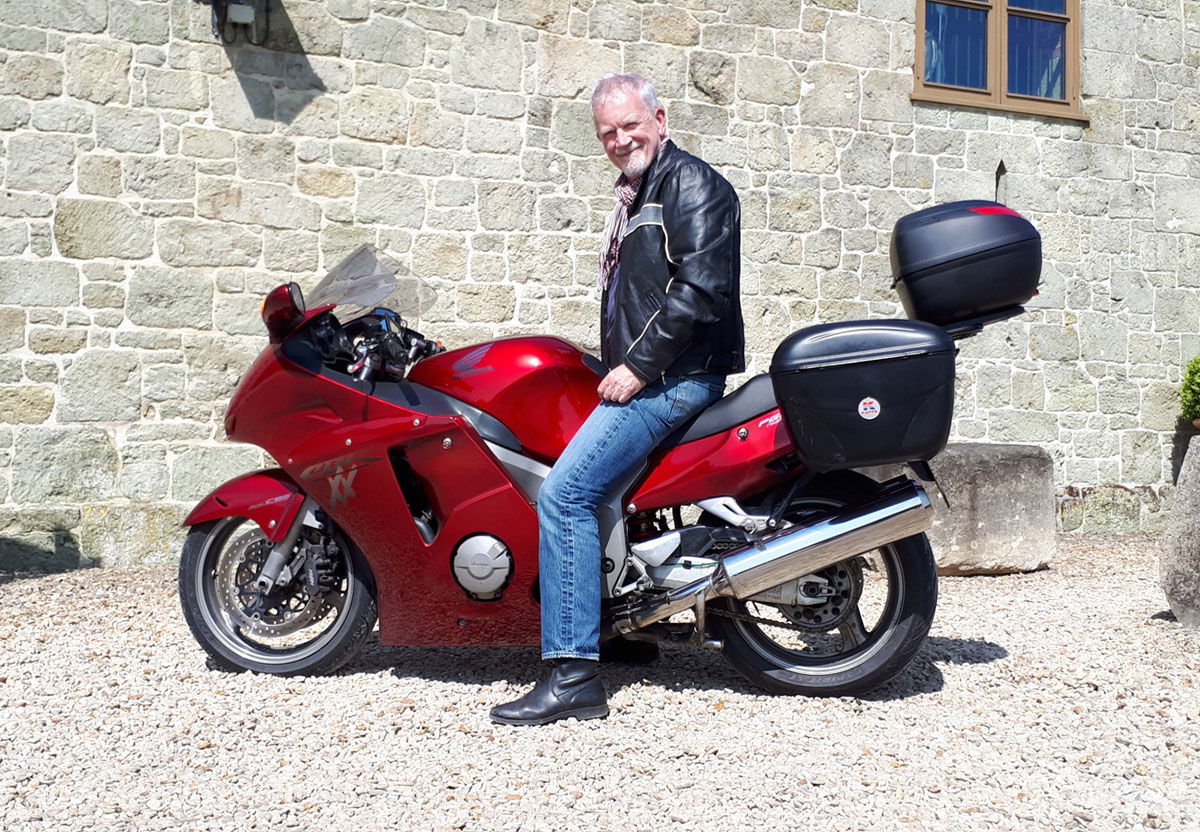Buying Used: 2017 Kawasaki Versys 650
Check our in-depth used-bike buyer's guide covering the Kawasaki Versys 650

WORDS: Chris Moss PICS: Lel Pavey
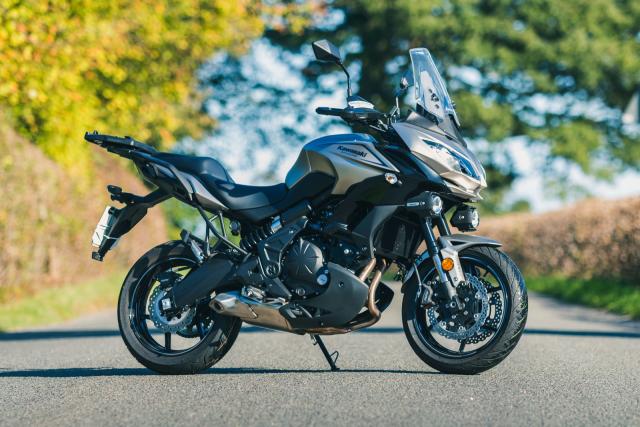
WE SHOULDN'T have been too surprised back in late 2006 when the first Versys 650 models were wheeled out into Kawasaki showrooms. The firm’s ER6n and ER6f budget bikes had already proved very popular during the year they’d been on sale, and the middleweight adventure bike market was looking good to grow. By using the ER6 engine and key chassis components as a base for the new Versys the Kawasaki engineers had a sound logistical and economic head start.
The first model, featuring underslung exhaust and side-mounted rear shock won many friends. At the press launch, journos reacted optimistically, deeming the new bike fun, friendly, and versatile. The future, they predicted, appeared positive, with the Versys especially likely to suit anyone relatively new to bikes, or a bit short of two-wheeled experience. Costing just £5000 back then looked like it would guarantee great sales. Alas, the journos’ crystal ball proved a bit off target and the 650 didn’t become the star they’d expected.
Three years later, the Versys got its first upgrade. It was hardly what you’d call radical, but shaper lines gave it a more pleasant appearance, with a rubber mounted motor giving smoother running. Better suspension helped handling, pillions sat more comfortably on a wider seat, and new mirrors improved the rearward view. The 2010 bike was weightier, but the revisions and ABS option did the trick, and sales improved.
By the time 2015 arrived, the Versys appeared in its third and current incarnation. A much more modern looking steed thanks to the restyled twin-headlight headlight, the improved looks boosted the bike’s appeal. As well as that, the engine got another 5bhp, slightly more torque, and additional rubber mounting to kill vibes even more. Suspension control improved and the rear shock gained a remote preload adjuster. ABS became standard, a 2-litre larger tank helped take you further, with the trips becoming even more comfy thanks to lower-sited footrests and a taller adjustable screen. Porkier to the tune of 8 kilos it may have been, largely down to heavier wheels and stronger rear subframe, but the latest Versys was rated as the best one yet. It also came in a Touring option complete with colour-matched 28-litre panniers, rack and hand guards. Even more mileage-friendly was the Grand Touring version with its additional 47-litre top box, fog lights, digital gear indicator, and 12v socket. It’s this model we’ve tested here.
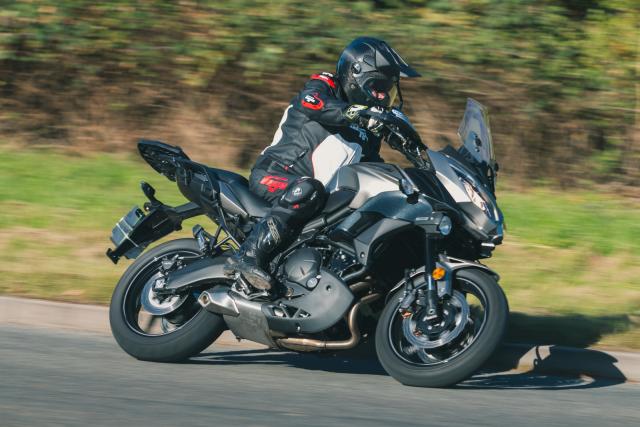
RIDING
Early impressions of the Versys lead you to believe, quite justifiably, it’s a bike that can successfully turn its hand to many roles. Almost everything needed to judge the Kawasaki as a capable multi-purpose machine is in place. Even a short ride ticks many boxes.
The riding position will get a thumbs up from virtually all sized riders. The relationship between seat, footrests and bars gives it the chance to easily accommodate those of longer limbs. And though the bum perch itself is a little high, with experience this becomes a less daunting issue for those (like me) of shorter leg who can’t plant their boots flatly on the floor. In saying that, assessing this point alone in the showroom might be a wise move before taking to the road. The upside of the loftier riding position is the excellent view it provides. Being able to look over cars and hedges really improves riding safety. Having enough room to move around easily adds to the bike’s relaxed feel. After clocking just a few miles on the Versys it’s easy to see its potential as a machine happily capable of much longer hauls. And with more mileage comes more approval.
One obvious stand out feature is the Kawasaki’s parallel twin engine. With its broad, dependable spread of power and torque, healthy progress can always be reliably called on with minimal effort. Low rev strength means, despite its slick action, the six-speed gearbox doesn’t require much use to raise speed and subsequently maintain it. The friendly punch is another calming and endearing feature of the Versys. There is enough extra speed available from the 68bhp motor at higher rpm to warrant sampling it, and it often proves useful for overtakes. But as the 650 can never be described as thrilling when spun harder, it’s really not worth thrashing too often. Instead, its flexibility, smoothness and user-friendliness are the features which generate ever increasing admiration. It really is a real world and effective engine, and with the bonus of being able to return 55-75mpg, it’s financially friendly too.
As well as being easy on the mind, the twin’s usability is similarly undemanding of the Kawasaki’s chassis. Its spec isn’t especially high, with a steel frame, basic suspension and brakes not giving you too much pub ammo. But just like its engine performance, the 650’s handling is easy and dependable. The leverage offered by its wide, ‘weight-lessening’ bars lets you flick the Kawasaki about with ease and often has you questioning its claimed 216 kilo kerb weight. From the seat, the Versys doesn’t feel anywhere near as heavy as that, and certainly doesn’t need any brute strength to make it head where you wish. Allied to its nice steering and notable overall balance, it’s an easy bike to master. That virtue applies wherever you ride it, but makes it particularly adept in town where speed and direction changes are more frequent and often less predictable. You can rely on the brakes and suspension in that environment too. There’s a slightly budget feel to the action of the forks and shock over some of the roughest surfaces, and with limited adjustment that can’t really be dialled out – though the remote preload adjuster for the rear shock is very convenient. In the context of the Kawasaki’s price and role though, the suspension’s performance is more than acceptable and I wouldn't be rushing off feeling any need to upgrade it. It’s the same story with the brakes. They might be fairly low tech in design with their twin-piston sliding calipers up at the business end, yet what might sound lacking on paper is easily good enough on Tarmac. You’d really need to be making unrealistic demands of the stoppers to find them lacking. The ABS is excellent, neither triggering too early nor taking too long to reapply pressure when it does cut in.
Impressive though it is as a commuter, it’s perhaps its ability out on more open roads where the Versys scores highest. For such a modest machine the Kawasaki deals with the job of taking you far and wide with total competence. I didn’t ride this one for too long, but I have travelled for some considerable distance on another example, knocking out the miles effortlessly. The position of the hand adjustable screen can’t be altered from the seat, but can be relied upon to provide good shelter from the wind and rain, as too can the handguards. The combination reduces energy-sapping physical strain so important to mile-eating ambitions, and you definitely won’t be ending your day prematurely for rest on this bike. Some testers I know have complained about the seat comfort after a couple of hours riding, but I’ve never had an issue. If you told me to get down to the south of France in one hit on this bike tomorrow, I’d be happy to take the job on.
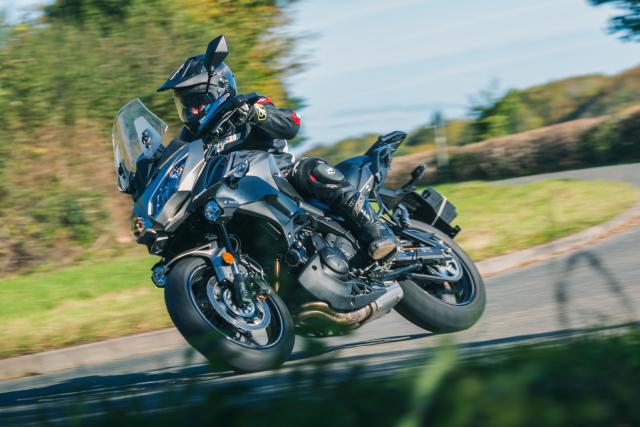
The all-important very healthy fuel range is another ally to mile-dispensing, with refuelling stops only required every 220miles at the earliest, with 300miles or even more being possible with more restrained use of the throttle. Not sure about you, but I really do view that as a significant advantage to covering ground effectively. With the standard-fitment panniers and top box of this, the Grand Touring model, you really do have a bike you can holiday on for a few weeks. Though as I only wanted to do 50miles for testing and photography, I left them behind at Gloucester-based dealer Thunder Road (01452 313131) who kindly loaned me the Versys. The absolutely immaculate, 2017, sub 1000 mile machine was on sale at the time for £6999, but unsurprisingly sold just a few days after I’d used it.
No doubt the new owner will enjoy the impressive versatility of the 650. It’s a real multi-tasker, highly capable of providing great service whenever and wherever you choose to ride it in a friendly and forgiving fashion. The Versys might not be a bike that excites, but if you’re like me and prefer machines that just get the job done efficiently and effectively, then the Kawasaki definitely stands a chance of getting your vote.
NEXT - EXPERT'S GUIDE, VALUES, WHAT TO LOOK FOR AND MORE!!
Buying Used: 2017 Kawasaki Versys 650 - Part Two
WORDS: CHRIS MOSS PICS: LEL PAVEY
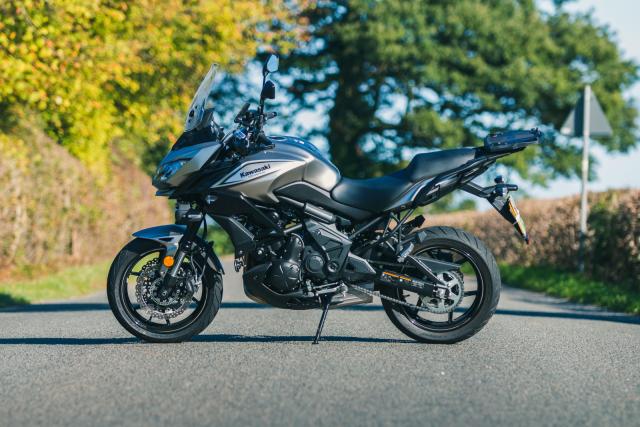
EXPERT’S VIEW
Andy Leigh is a Manchester-based freelance bike mechanic who’s serviced and repaired loads of Versys 650s.
“The Versys is a brilliant all-rounder. If it’s looked after properly it won’t give you any problems at all. The main thing is to keep it clean, especially if you ride it in bad weather. The finish if OK if you give it a regular wash, but if you let it get and stay dirty for weeks them corrosion starts to set in. And because it’s assembled nigh-on dry at the factory you’re as well to do some preventative maintenance on the bike as soon as you can. Head bearings, swing arm pivot bearings and wheel spindles will last much longer or be easier to remove if you grease them as early as you can. And all the electrical connectors will do the job they’re supposed to if you regularly spray them with WD40 or the like. Quite of few of today’s riders forget bikes need to be regularly looked after.
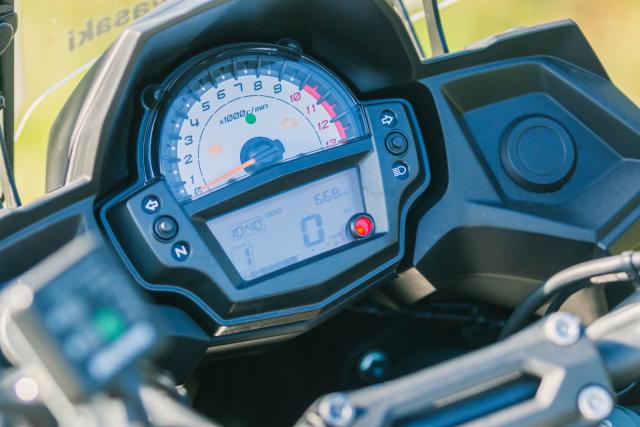
“It’s not a bad bike to work on. Changing the oil and filter is an easy enough job for the home mechanic, though I like to do it every 4000 miles (it’s recommended every 7500miles). Bikes engines rev higher than most, and their clutches and gearboxes run in the same oil. Working on the top end is straightforward once you’ve removed the fiddly airbox. In saying that, the short steel sleeve round the stick coils corrodes if you don’t grease them. They can weld themselves to the rocker cover, and if they do you have to break the coil to get to either the plugs or the valves. It’s a job well worth doing and saves you money and a hell of lot of possible aggro. Wiping down the fork stanchions regularly is a smart move too. Your seals will last a lot longer.
“Not really a bike that attracts hard riders, most consumables wear well. The suspension can get a bit tired at higher mileages but tyres, pads and transmission components last a long time. Look after the Versys and it’ll look after you. It’s a good solid all-rounder.”
WHAT ABOUT THESE?
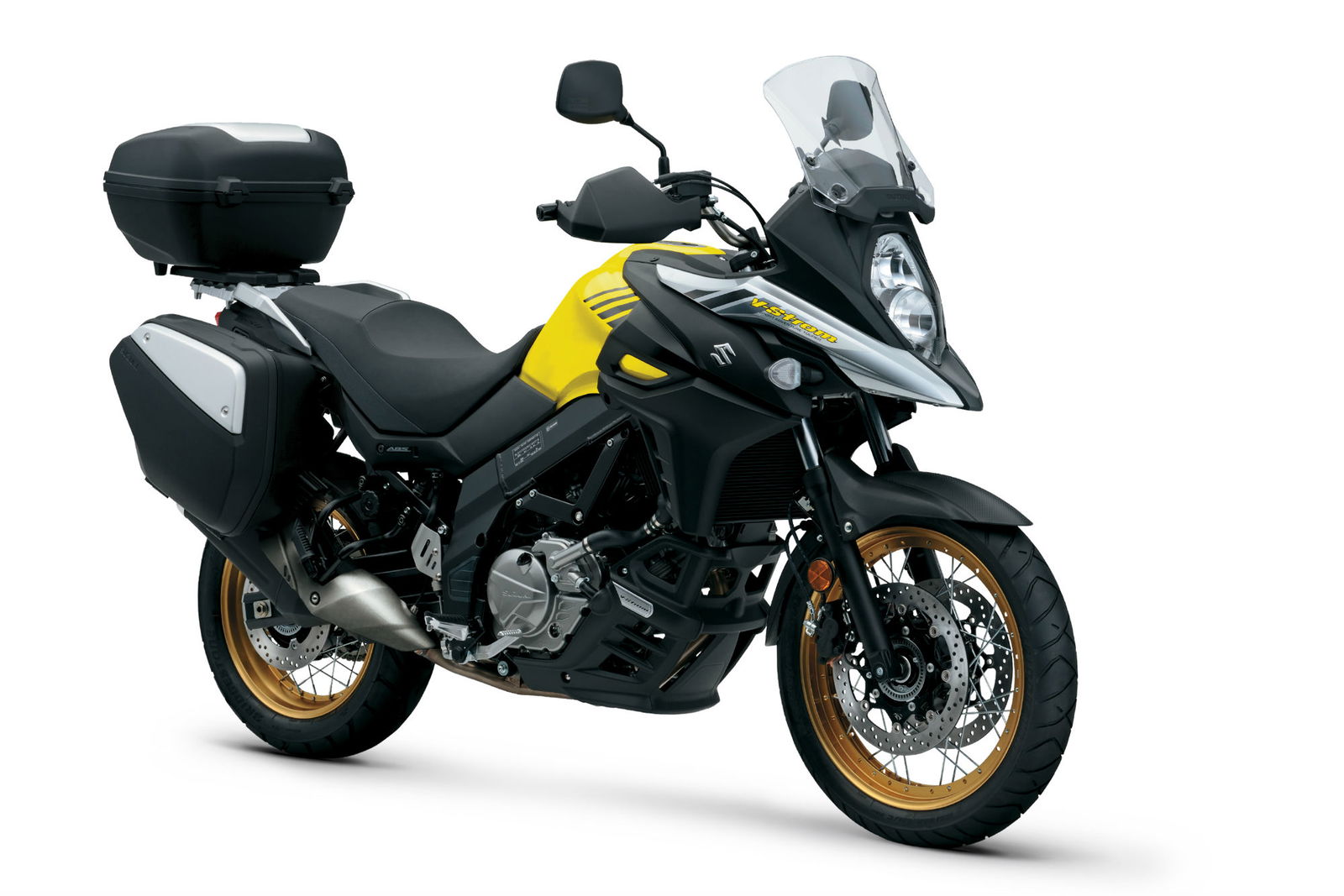
SUZUKI DL650 V-STROM, 2011-2016, 645cc, 90°V-twin, 68bhp, 214kg
Stylish second version of the middleweight all-rounder can tackle just about everything thanks to its usable blend of performance and practicality. A really under-rated and versatile motorcycle that's comfortable, frugal, and makes lots of sense overall. Not so bad off-road on the right tyres.

BMW F800GS, 2008-current, 798cc, parallel twin, 85bhp, 185kg
Less famous than its bigger brother, the 800 is just as versatile. Engine isn’t as punchy as the bigger version and likes revs. But it’s still flexible and useful. Good on fuel, and easy on the body. Lots of official extras. More expensive.
KTM 690 Enduro R, 2009-current, 690cc, single cylinder, 66bhp, 155kg
A much more off-road focused bike that's brilliant on the dirt, yet still fairly capable on Tarmac. Not as refined, comfortable or well-equipped as most middleweight adventure bikes, however excellent suspension helps handling, and pokey motor provides good speed. Very nicely built and finished.

Yamaha XT660X Tenere, 2008-current, 660cc, single cylinder, 46bhp, 183kg
Another lightweight that's happy and very manageable off-road. The XT’s quite a basic machine, is bit underpowered and sparsely equipped, though those features make it an excellent machine for a longer off-road adventure. Handles and brakes well though, and is both cheap to buy and run.

WHAT GOES WRONG?
The Versys 650 is an excellent used buy. The Kawasakis are usually looked after well by their owners in terms of the way they’re both ridden and maintained. Riders are normally either quite new to the bike scene, or retuning to it after a lengthy break. Either way, they tend to have their 650s dealer serviced and on time. There are enough on the market to choose from, negating the need to either travel far, or having to consider anything in less than excellent condition. Given that the Versys model we’re studying here is the last, third generation one, and only three years old at most, the majority available are of low mileage. Those with bigger readings on their clocks shouldn’t be overlooked though, as the Kawasaki has a strong and justified reputation for solidity and reliability. Just make sure the asking price is appropriately lower.
Around half of the 650s on sale are either the Touring or, just like the very low mileage model we tried, Grand Touring versions. These bikes are certainly the ones to go for, their luggage (big enough for one helmet in each pannier and two in the top box) and other extras like handguards and, in the case of the highest spec model, fog lights, power socket and gear position indicator making them all the more capable for very little extra money.
Regardless of the Versys’s history likely being favourable, it’s still worth inspecting the bike closely. The overall finish gives you an excellent chance to assess just how well it’s been treated. Obviously it’s a case of the cleaner the better, and if you can see some more serious corrosion in the harder to reach areas, then either the care has been less than thorough, or the clean up for sale more superficial. There are enough 650s out there in super condition for you to grab one without needing to try too hard. Check the service history carefully. Even bikes with an average annual mileage of only 3-5000 miles need to have had their oil and filter changed. If not, you need to ask why not. And if the bike clearly hasn’t been ridden for much of the year, then you should find out how well kept it’s been when it’s not being used. Things like the battery having been kept charged, and the engine not started and run up for short periods need checking out.
Look also for evidence of light crash damage from slow speed or static topples. Not only is the Versys quite a tall bike, it’s also often owned by those of limited or little recent experience. Scuffed, or recently replaced extremities like bar ends, levers and footrests serve as a clue to this having occurred. A test ride should reveal a quiet, oil tight engine that runs smoothly, offers usable, friendly power, and a chassis with sweet steering and sharp brakes. Suspension should feel composed, though bikes that have done over 15,000 miles may have a slightly soggy feel thanks to their springs and damping starting to become tired.
VALUES
£4250-7000
* Prices are for early 2015 models sold privately in average condition to newer, well cared for higher specification 2017 examples available at dealers. The difference between used standard, Touring and Grand Touring models is negligible.
TECH DETAILS
ENGINE
One of the Kawasaki’s biggest assets. Very friendly, usable and economical, the flexible parallel twin pulls well from low rpm, even in bigger gears. Reliability is excellent if it’s serviced regularly and is capable of recording 50,000 trouble-free miles or more.
OIL CHANGES
Oil and filter changes are advised every 7500 miles. Some are of the opinion the job should be done more often, particularly is the bike is used for lots of shorter runs. Whatever the sort of journeys or mileage, it should be carried out every 12 months.
CRASH DAMAGE
Thanks to it being popular with the less experienced, look carefully for signs of crash damage. Damaged or recently replaced bar ends and levers are giveaways to slow speed topples. Anything more significant may warrant looking at another machine.
FINISH
Keeping the Versys looking good requires regular cleaning. It has a reasonably robust finish but it will start to look scruffy if it’s constantly neglected. Fitting a fender extender and rear hugger will help keep the bike looking tidier. Use the overall condition of the bike as an accurate guide to the sort of life it’s led.
BRAKES
Sharp and powerful when new, the performance of the brakes will remain that way if kept clean and serviced. The performance of the front twin-piston calipers can be improved by fitting braided hoses and aftermarket pads. This only really needs to be considered if you ride very hard or carry pillions and luggage more often.
AVAILABILITY
There are enough Versys 650s on the market for you to be fussy and not need to travel too far. Most have been owned by older riders or those quite new to biking. Check service history quite carefully. Though the majority do look after their machines, and have them dealer serviced, others aren’t always clued up enough to appreciate what’s required to maintain a bike correctly.
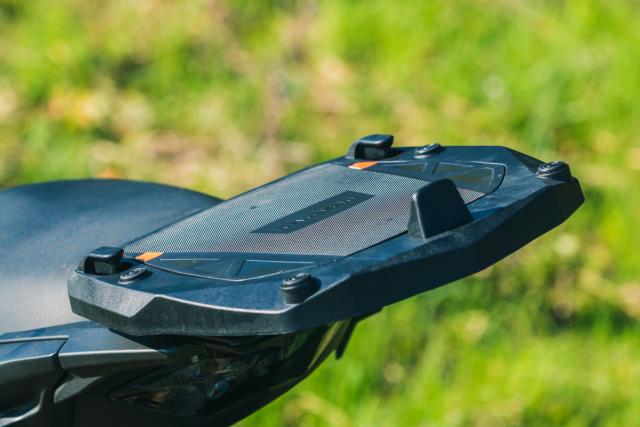
EXTRAS
Many Versys 650s are fitted with sensible extras such as taller screens, heated grips and chain oilers. The Touring and Grand Touring models are the ones to go for. The luggage, hand guards and other useful accessories boost the bike’s versatility and don’t cost much more. All parts are available as official accessories, but it’s much more expensive to build up to the higher spec models’ level that way. Centre stands aren’t available from Kawasaki, though several options are on sale from £125-200 from other aftermarket firms.
HOME SERVICING
With a decent tool kit and mechanical experience, all regular maintenance such as weekly checks and engine oil and filter changes are easy to carry out. With the fuel tank and airbox removed access to the top end isn’t too bad. However, the stick coils can also corrode into position and unless they’re lubed with silicon grease and can easily break when forcing them to lift. Valve clearance checks shouldn’t be neglected, though they only need doing every 26,000 miles and don’t often need to be adjusted. The recommended interval is out of sync, so have it done at the 22,500 mile service rather than risk it at the 30,000 mile one.
PREVENTATIVE MAINTENANCE
The reliability of electrical connectors will be greatly improved if they’re treated with some anti-corrosion spray. It’s also worth stripping out and greasing headraces and swingarm pivot bearings as they’re not generously treated at the factory.
AFTERMARKET SPECIALISTS
US-based www.motowerk.com sells footrest lowering kits, bar risers, mirror extension and lowering kits for the Versys.
LOWERING KIT
A lowering kit is available from www.lustracing.co.uk. Lowering the seat height by 40mm, it can make the Versys more manageable for shorter legged riders.
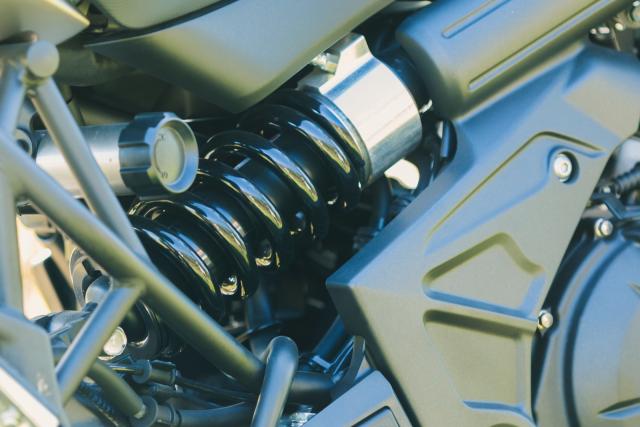
SUSPENSION
Though the latest model's suspension offers the best control of all Versys 650s, it can still be improved significantly, especially as it ages. Replacing both the fork and shock springs is the cheapest way to improvement, though reworking the forks and fitting a superior replacement shock will offer the very best wheel control. Calsport offer a range of solutions, www.calsport.co.uk
USEFUL WEBSITE
Consult other owners for tips and advice on Versys owner's forum, www.kawasakiversys.com
DEALER SERVICING
Every 7500 miles/12 months = £225-275. Every 15,000 miles £250-300.
Every 26,000 valve clearance checks = £400-450
* Costs will vary depending on labour rates and condition of your bike and parts
required
SPECIFICATIONS
Price: £4250-7000
Engine: 649cc, liquid-cooled, dohc, 8v, parallel twin
Power: 68bhp @ 8500rpm
Torque: 47lb/ft @ 7000rpm
Kerb weight: 216kg
Transmission: six-speed, chain drive
Frame: steel tubed diamond
Suspension: (F) 41mm telescopic forks, adjustable preload, rebound damping (R): monoshock, remotely adjustable preload
Brakes: (F) 300mm disc, twin-piston ABS calipers (R) 250mm disc, single-piston ABS caliper
Tyres: (F) 120/70-17; (R) 160/60-17
Seat height: 840mm
Wheelbase: 1,415mm
Fuel capacity: 21 litres
